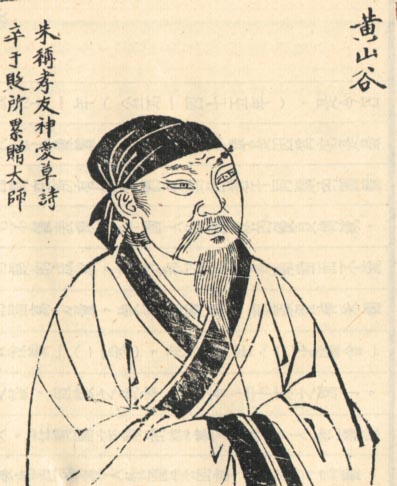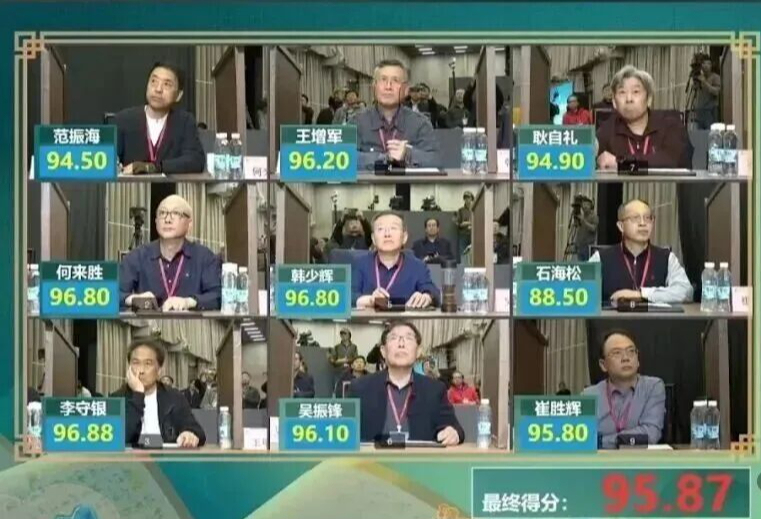

Wang Wei, the representative inheritor of Jiading bamboo carving, a national intangible cultural heritage project, is an indispensable figure in Jiading bamboo carving for nearly half a century. He almost single-handedly contributed to the revival of Jiading bamboo carvings in the contemporary era, and almost all the backbone of the active Jiading bamboo carvings have studied under him. These days, "Bamboo Destiny - Wang Wei Art Exhibition" is being held in Jiading Museum. The exhibition exhibits Wang Wei's masterpieces of bamboo carving in various periods during the 42 years he has been engaged in bamboo carving art, presenting the epitome of his life with bamboo for more than 40 years.
"Jiading bamboo carvings are written with knives, and every stroke and every knife has the charm of calligraphy and painting lines. Without the participation of Jiading literati, Jiading bamboo carvings would not have a glorious history." Wang Wei told The Paper.
Wang Wei's hall name - "Zhu Yuan Tang" aptly expresses his half-life fate with bamboo. He was recruited into the "Bamboo Carving Society" in his early 20s, which ignited the revival of Jiading bamboo carvings, and now he is still working hard for the inheritance of Jiading bamboo carvings after retirement. It was as if something pulled him back to the track of carved bamboo. "Bamboo carving in Jiading is a skill created by literati. It uses a knife instead of a pen, uses bamboo as paper, and integrates calligraphy, painting, seal cutting and seal arts into one. There are five categories of engraving, openwork carving and round carving, and each engraving method is uncanny."
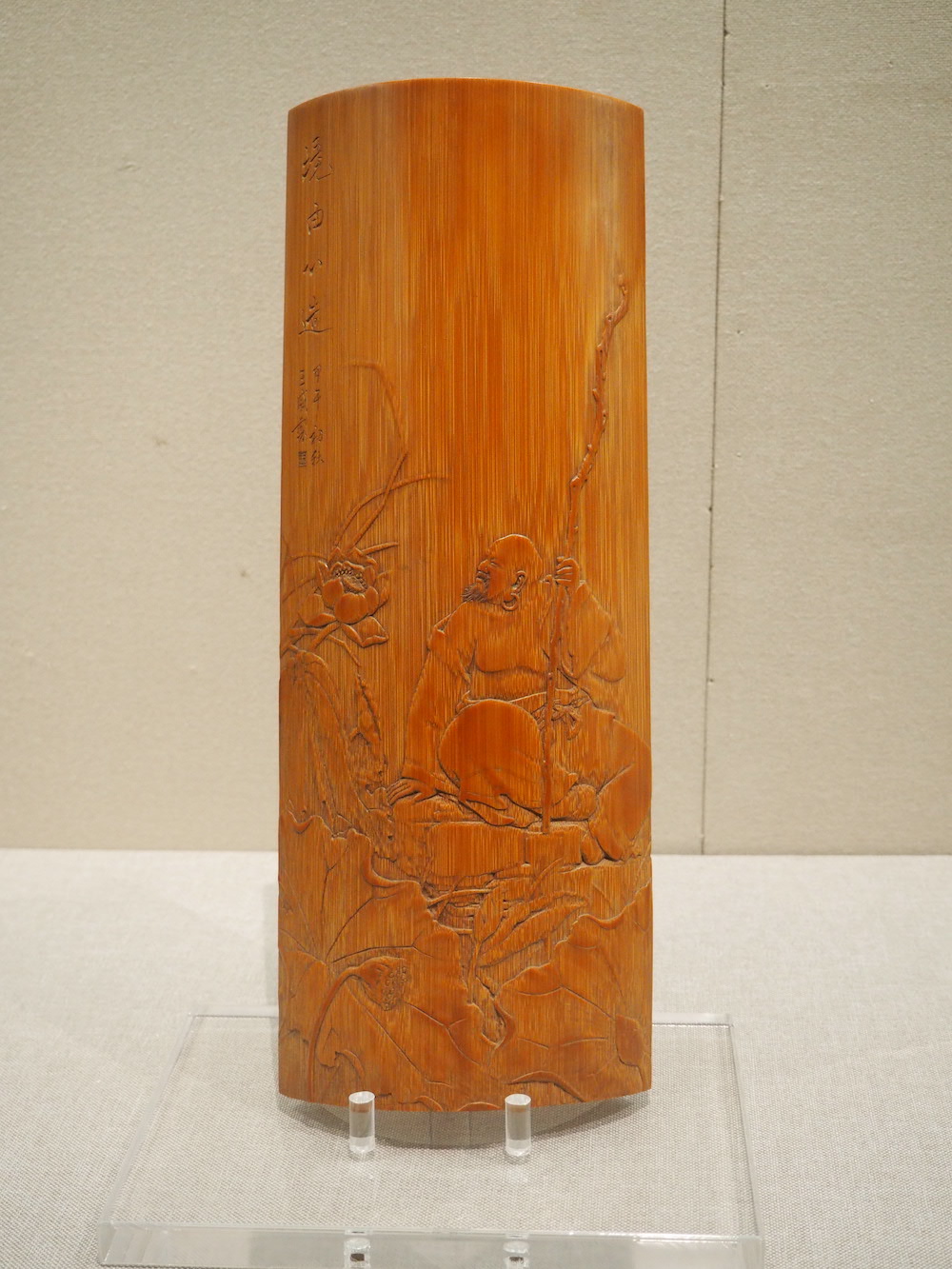
The exhibition scene is made from the heart and Wang Wei is on the arm
Jiading bamboo carving was founded in the middle of the Ming Dynasty. The founder was Zhu Songling. After that, they passed on their father's business. After three generations of continuous efforts, the Jiading bamboo carving technique was perfected. The Ming and Qing Dynasties were favored by dignitaries and literati. . At the end of the Qing Dynasty, it gradually declined, and famous artists were scarce; after the Republic of China, the products gradually became unsalable, and in the early days of liberation, Jiading bamboo carvings with a history of more than 400 years were dying, and there was no bamboo carving artist in the huge Jiading County.
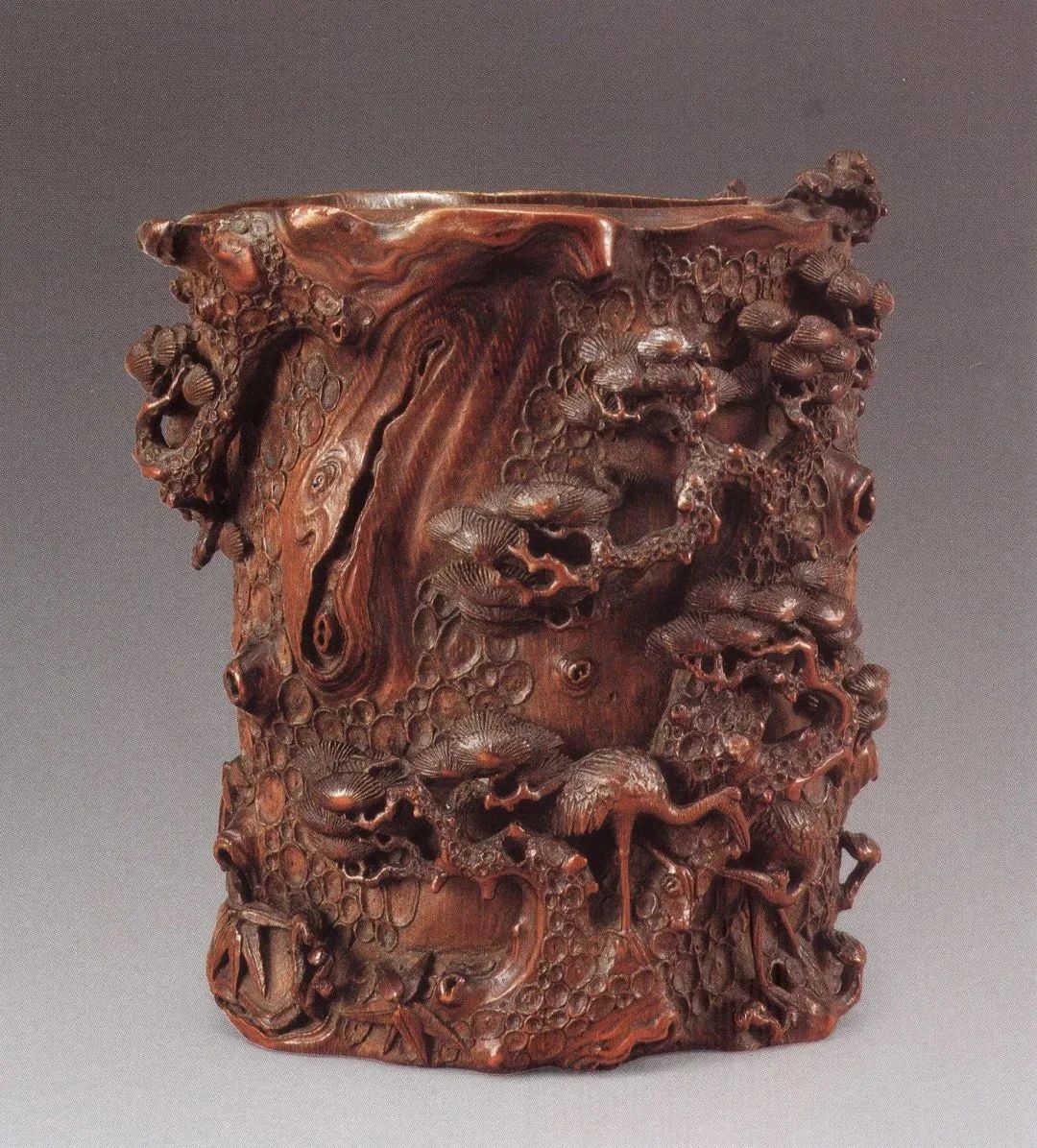
Ming Zhuhe Songhe Pen Holder Collection of Nanjing Museum (not in this exhibit)
Wang Wei grew up in a scholarly family in Anting Old Street, Jiading. His father was the primary school principal and art teacher. He once studied under Mr. Song Wenzhi, the vice president of Jiangsu Academy of Traditional Chinese Painting. As soon as my father came home when I was a child, he instructed the three brothers to paint and paint. Now the brothers are all engaged in art-related fields. Wang Wei jumped to the countryside at the age of 17. Because he knew how to draw, he was selected as a publicity officer to give full play to his skills. At that time, Jiading bamboo carvings were dying. In the early 1980s, Mr. Hu Juewen, together with many patriots, called for the revival of Jiading bamboo carving skills. With the support of the Jiading County Government, the "Bamboo Carving Club" under the Handicraft Company of the Township Industry Bureau was established. The club recruited six members to work full-time on Jiading bamboo carving creation, trying to restore this excellent traditional craft. As a member of the group of six, Wang Wei formed a lifelong relationship with Jiading Bamboo Carving.

Wang Wei
It can be said that Wang Wei has witnessed the contemporary development of Jiading bamboo carvings. He is a witness, and his persistence or turning away is accompanied by the ups and downs of Jiading bamboo carvings.
The ups and downs of bamboo edge life
The Paper: Jiading Bamboo Carving has a history of more than 400 years and is a business card of Jiading. However, at the end of the 1950s, the development of bamboo carving in Jiading fell into a desperate situation, and the bamboo carving skills faced a fault. In the early 1980s, under the appeal of patriots such as Hu Juewen and the help of governments at all levels, Jiading established the "Bamboo Carving Society" to resume the learning and inheritance of bamboo carving skills in Jiading. As a person who experienced it, can you introduce the development and current situation of Jiading bamboo carving in contemporary times?
Wang Wei: Jiading bamboo carving was founded in the Zhengde period of the Ming Dynasty, and the founder was Zhu Songling. Afterwards, they passed on their father's business from their sons, and through the continuous efforts of three generations of ancestors, the bamboo carving techniques in Jiading were perfected day by day. In the Ming and Qing Dynasties, they were favored by dignitaries and literati. The Kangxi and Qianlong periods were the heyday of bamboo carving in Jiading. "Bamboo People Record" records the situation of bamboo people in Jiading in Ming and Qing Dynasties in detail. In "Bamboo People Record" alone, there are more than 100 bamboo carving artists, all of whom are engaged in Jiading bamboo carving with names and surnames. During the Kangxi and Qianlong periods, there were many bamboo carving shops on Jiading Old Street, which shows that the economy was prosperous at that time, the demand for bamboo carving products was strong, and the bamboo carving artists were thriving.

Ming Zhu Xiaosong Bamboo Carving Liu Ruan Entering the Roof Incense Tube (not in this exhibit)
During the Jiading period of the late Qing Dynasty, bamboo carving began to decline. Due to the slow sales of bamboo carving products, the number of artists participating in bamboo carving also gradually decreased. Until the Republic of China, only a handful of artists were engaged in bamboo carving, among which the bamboo carving master Pan Xingyong was called "Jiading's last bamboo carving master". Before liberation, he was alone and impoverished. He was often forced by life to rush to find buyers for daily necessities such as pen holders, fan bones, and chopsticks. He was once a private engraver of Jin Dingkang, the owner of Chengfeng Flour Mill.
By the end of the 1950s, Jiading bamboo carvings were on the verge of death, Jiading bamboo people changed careers, passed away, and almost no one was engaged in bamboo carving creation. In the early 1960s, the Shanghai Jade and Ivory Carving Factory was established. We, a group of veteran artists in Jiading, switched careers and were recruited into the Jade and Ivory Carving Factory to engage in jade and ivory carving. The bamboo carvings in Jiading have broken down like this.
Because Jiading bamboo carvings were well-known during the Republic of China, overseas Chinese brought a lot of bamboo carvings when they went abroad in the past, and bamboo carvings were regarded as a major collection. Until the early 1980s, some old overseas Chinese returned to China to visit their relatives, and they felt sorry for the decline of Jiading bamboo carvings. Hu Juewen, a former vice-chairman of the Standing Committee of the National People's Congress, was very concerned about the development of bamboo carvings in Jiading. In the early 1980s, he wrote to the Jiading county government to inquire about the current situation of bamboo carvings in Jiading, and proposed to protect and restore Jiading bamboo carvings. With the appeal of Hu Juewen and many patriots and the support of governments at all levels, Jiading County established the "Bamboo Carving Club". Since 1981, it has recruited students to learn bamboo carving, and has implemented it as a "political task" to restore the traditional skill of bamboo carving in Jiading. .
At that time, I was just in my early twenties, and because of my foundation in painting, I was recruited into the bamboo carving club and became one of the six members of the bamboo carving club in the whole district to learn and inherit Jiading bamboo carvings.
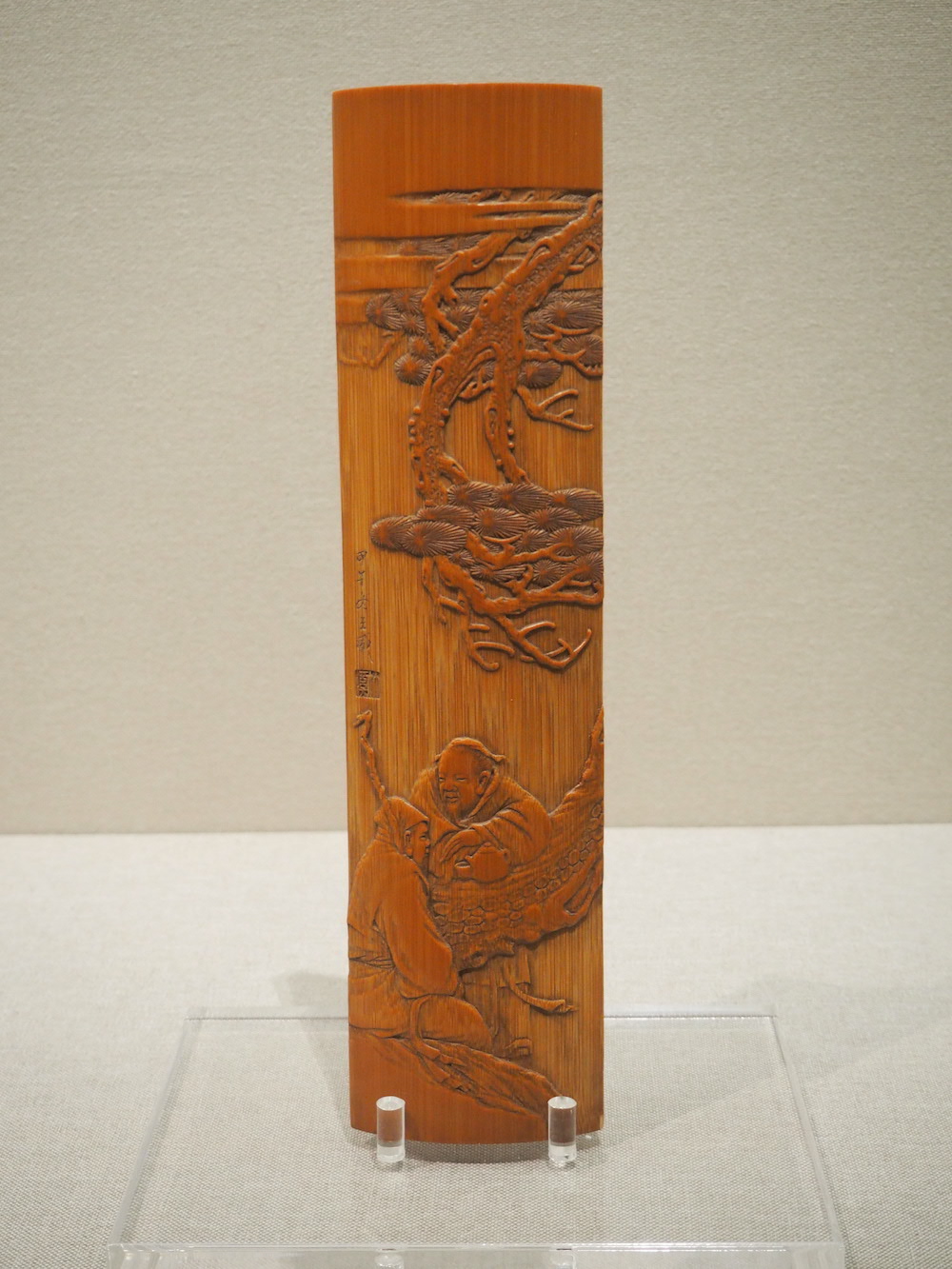
Exhibition site Panasonic discusses the Tao map armrest Wang Wei
The Paper: After entering the "Bamboo Carving Society", what exactly did you learn and who did you learn from? Is there any old gentleman who can lead you?
Wang Wei: After entering the unit, a few of us became the expectations of the whole county, with a mission. The first time the leader gave us a lecture, he told us that this craft is not only about passing on, but also a "political task" and told us to practice diligently, and we must first learn bamboo carving well before we can make friends. We all take the leader's words to heart.
Bamboo carving in Jiading is a handicraft of faults, so who can I learn from? In fact, there is no one to learn from. Among the six members of our bamboo carving club, three of them are young people in their early twenties like me, and three of them are old masters who used to carve wood panels in the countryside. Let us learn from them. Their skills have little to do with Jiading bamboo carvings, and the things they carve are not even our own. We have never seen the real good Jiading bamboo carvings, and gradually we all lose interest and confidence in learning.
After the leader knew about our situation of no one to teach, he asked us to visit museums all over the country to observe the excellent Jiading bamboo carvings left by our predecessors. The first stop is the Suzhou Museum. At that time, the "Destruction of the Four Olds" had just ended, and the museum hadn't opened normally, and the gates were basically locked. When we took the letter of introduction and knocked on the gate of the museum, the old curator who loved Jiading bamboo carvings was so excited when he saw our young faces, he repeatedly said "Jiading bamboo carvings have successors". This scene still leaves a deep impression on me.
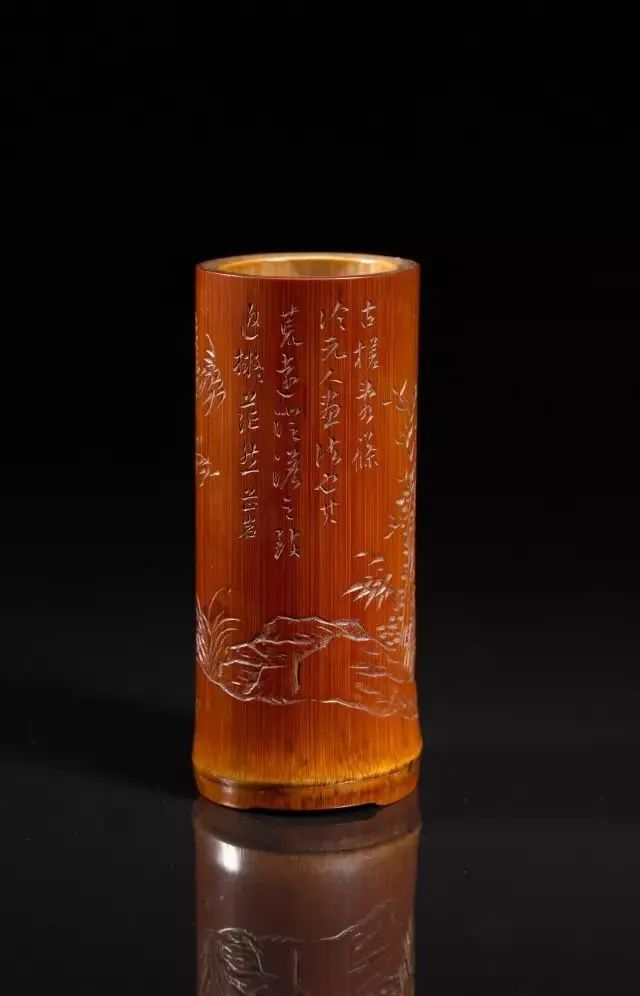
Bamboo Pen Holder with Shallow Carving of Bamboo and Stone Picture by Zhou Hao in Qing Dynasty, Collection of Shanghai Museum (not in this exhibit)
In the warehouse of Suzhou Museum, when we first saw the works of our predecessors’ bamboo figurines, we were very shocked and deeply impressed by the uncanny craftsmanship of the ancients’ bamboo carving skills. Those bamboo carving works have been washed away by hundreds of years, and each work has left a ruddy patina, and each work can deeply move people.
After reading it, our confidence doubled. After I went back, I suffered from insomnia for several nights in a row. Every piece of bamboo carving in the museum gradually emerged in my mind like a movie. Afterwards, we went to Nanjing Museum, Yangzhou Museum, and Beijing Palace Museum. Every time we went to a museum, the local museum leaders sighed, "You Jiading bamboo carvings have successors from now on" and "You must inherit the skills of your predecessors."
At that time, there were no pictures and materials, and it was all based on memory. Because I watched carefully, every work was deeply imprinted in my mind. The techniques of bamboo carving in Jiading can be divided into openwork, relief, thin relief, intaglio, and round carving... If you don't see it with your own eyes, you can't do it at all. After we came back, we pondered over and over again, and slowly turned the exquisite engraving in our memory into reality. After half a year of hard work day and night, we gradually got on track with the traditional techniques of Jiading bamboo carving.

Gazebo summer painting pen holder Wang Wei
The Paper: In addition to the "heart-to-heart imitation" of the bamboo carving works of your predecessors, what other factors prompted you to master the essence of bamboo carving skills so quickly?
Wang Wei: After entering the Bamboo Carving Club of a handicraft company, as a full-time bamboo carver, we have officially started to learn bamboo carving. In order to enhance our art foundation and increase our artistic accomplishment, the Bamboo Carving Society sent three young members among us to Zhejiang Academy of Fine Arts for further study. We studied art courses from traditional Chinese painting to Western painting for one year.
Starting from basic sketching, and we already have some basics of traditional Chinese painting, we learn quickly and often paint around the clock. Although we only study systematically for one year, it is not inferior to the current four-year undergraduate study. After a year of study, it is also a great leap forward in the improvement of our bamboo carving skills.

Qing Dynasty Wu Zhifan Deep Relief Er Qiao Bingdu Picture Bamboo Pen Holder (not in this exhibit)
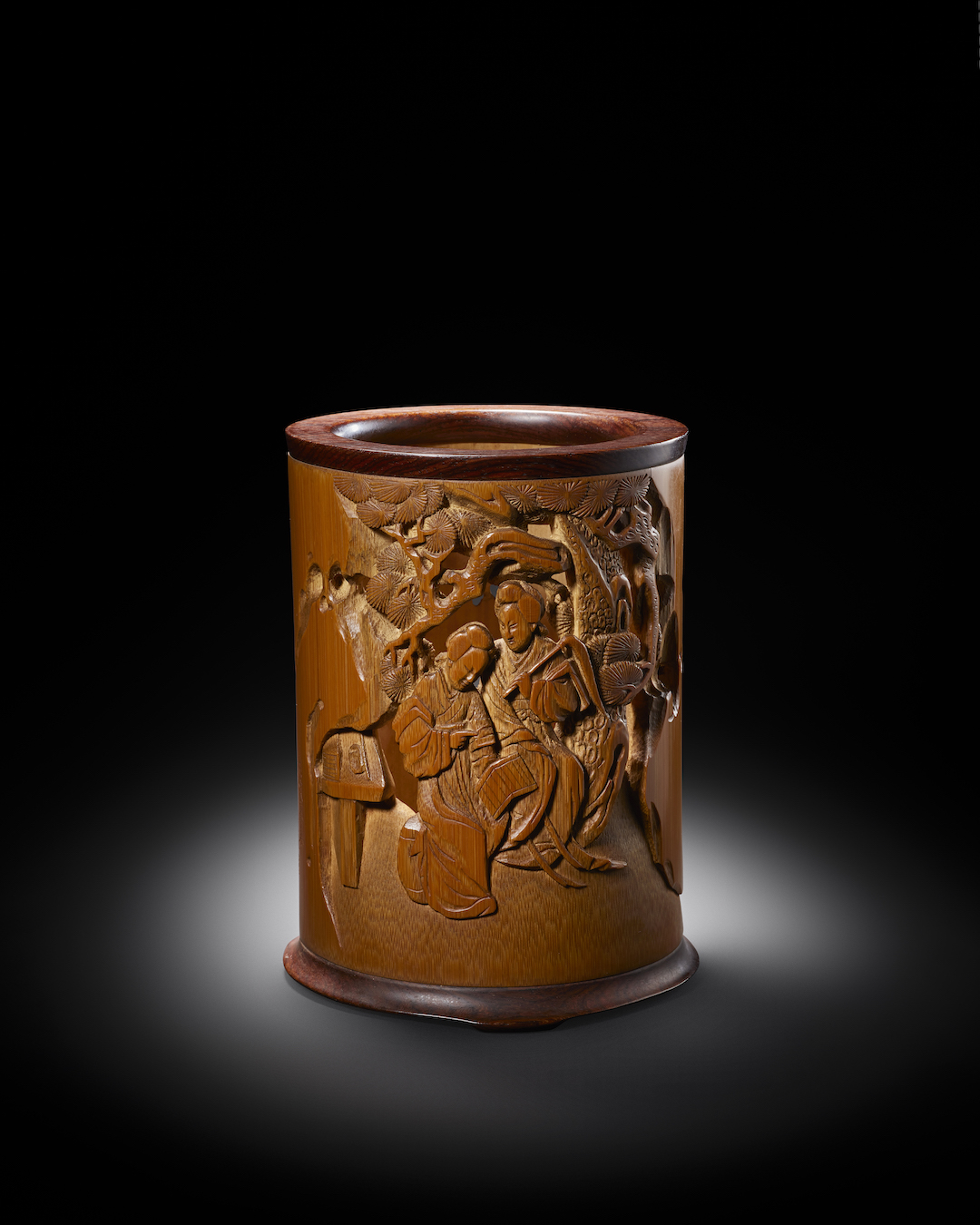
Er Qiao and Reading Pen Holder Wang Wei
The Paper: What kind of development did the "Bamboo Carving Society" experience later? Has Jiading bamboo carving really developed from "one person's art" to the present? Among the six members of the earliest bamboo carving society, why are you the only one left to stick to the field of bamboo carving?
Wang Wei: This is another long story. At the beginning, because of Mr. Hu Juewen's appeal, in order to restore the traditional skills of bamboo carving in Jiading, a bamboo carving club affiliated to the handicraft company was established. By the early 1980s, enterprises were required to be responsible for their own profits and losses. Due to the economic downturn at that time, the people were generally poor, and bamboo carving products were unsalable. Over the past few years, a lot of bamboo carvings have been hoarded in the warehouse. The Bamboo Carving Society was forced to shut down, and the company asked us to find our own way out.
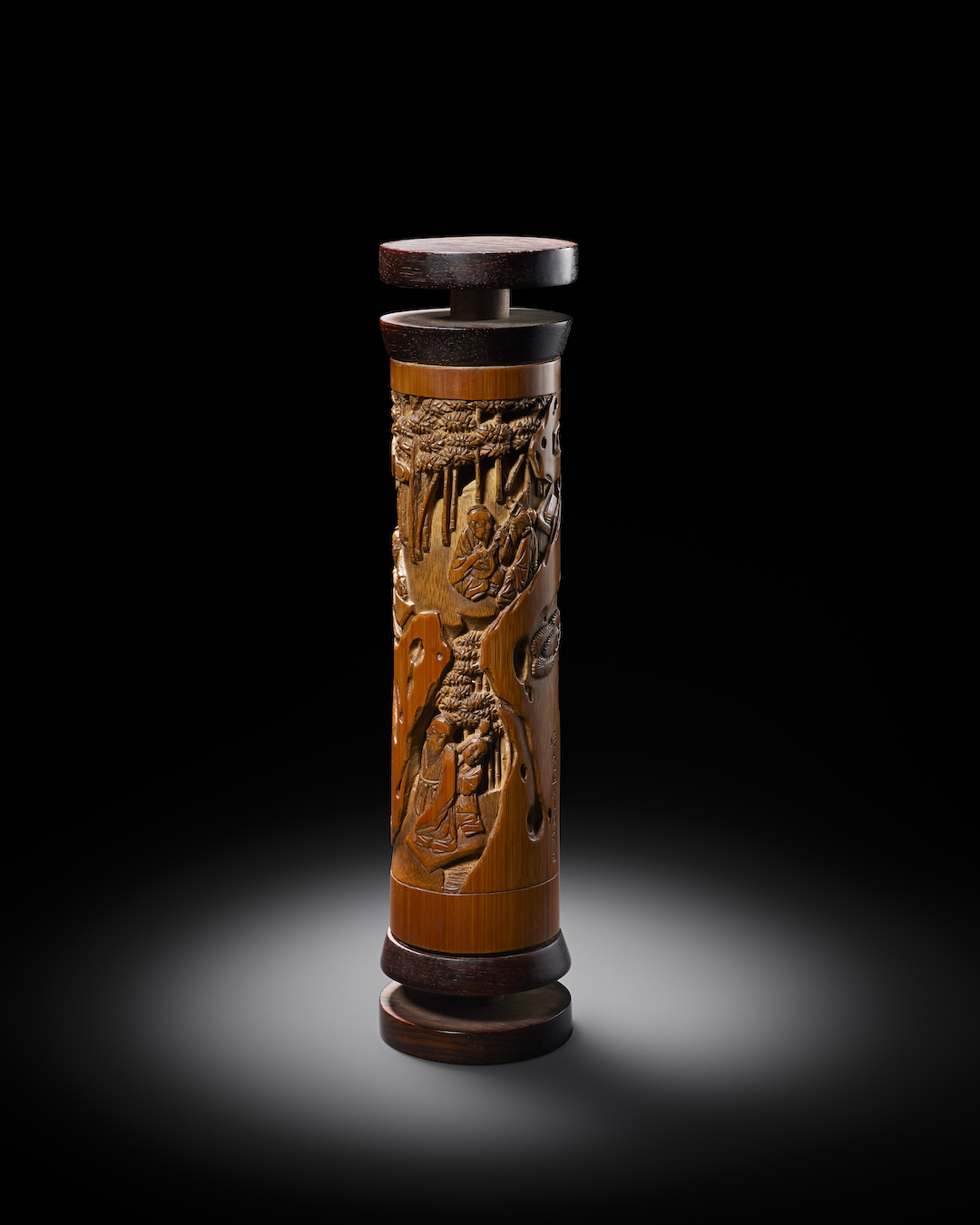
Seven Sages of the Bamboo Forest Aromatherapy Wang Wei
Just before the closure of the bamboo carving club, I received a notice from the foreign affairs office of the county, saying that let us take our bamboo carving works to the delegation from the sister city Osaka, Japan, and it would be best to sell them to earn foreign exchange. I remember I took a small pen holder, which I spent several months engraving, about the Seven Sages of the Bamboo Grove. One of the heads of the delegation saw my work and liked it very much. He immediately told the translator that he would order ten of the same pen holders. In this way, I received the first order in my life. In order to complete this order, I carved it every day. In the middle of the night, it is also logical to transform from a member of the bamboo carving society to a bamboo carving "self-employed".
With the reform and opening up, more and more overseas friends pay attention to and like bamboo carvings. My bamboo carving works have become best-sellers, and orders are pouring in, including Singapore and Japan. Often there are too many orders to make big problems. Because I was the only one engaged in bamboo carving in the whole county at that time, the headline of newspapers and magazines was "Art of One Man". I persisted until the end of the 1980s by myself. Because of working day and night and suffering from overwork, I often felt powerless. Many times I thought of giving up bamboo carving, but the leaders of the district felt that now I was the only one who knew Jiading bamboo carving. I gave up, which means that Jiading bamboo carving has failed again, and it seems to be my personal mission to pass on Jiading bamboo carving skills.
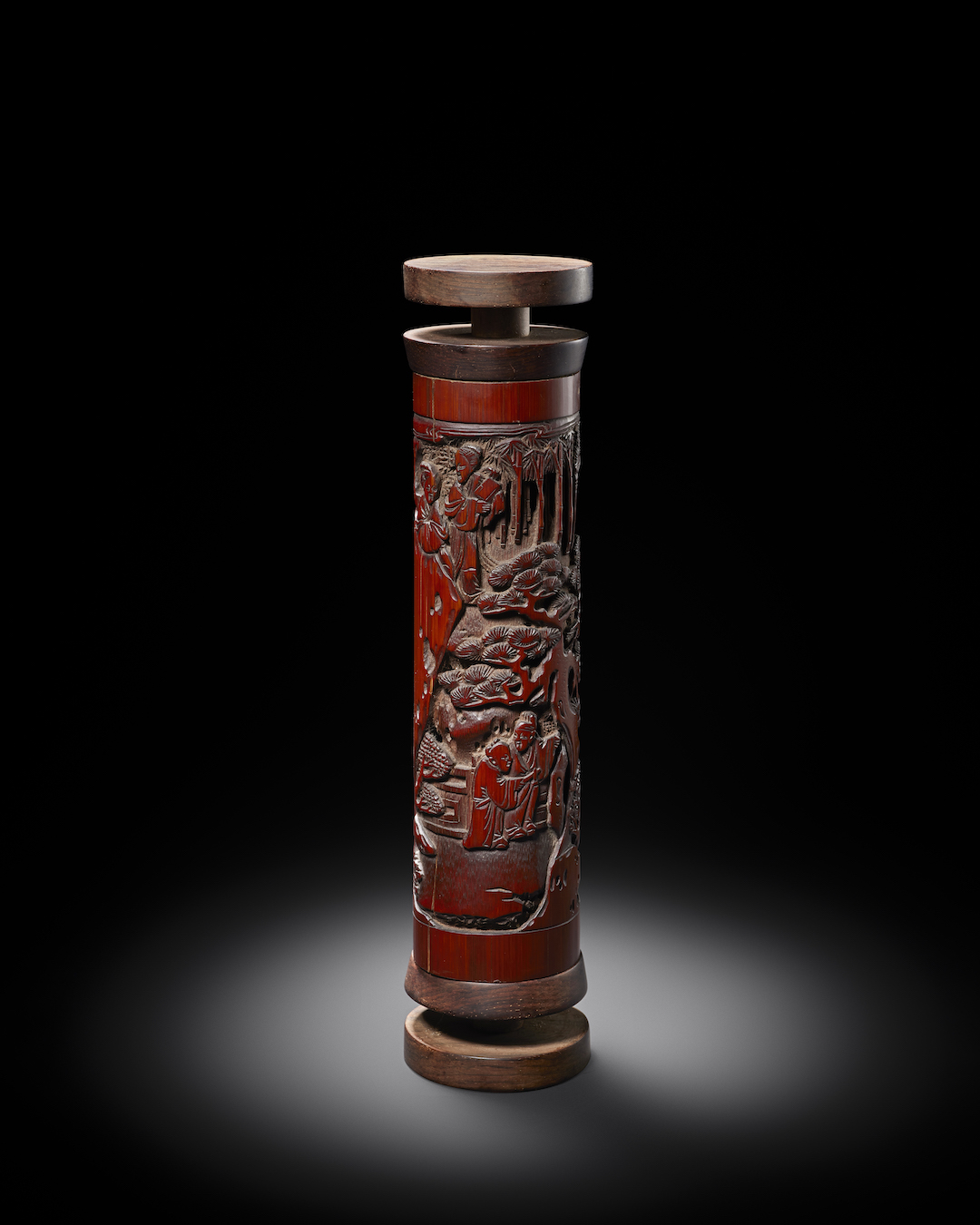
Aromatherapy Wangwei in the courtyard for summer
In order to change the current situation that I am the only one fighting alone in the field of bamboo carving, the Hou District Government proposed that I lead apprentices to inherit Jiading bamboo carving skills. I agreed without hesitation, so I held two training courses that had never been done before in the history of Jiading bamboo carving, and taught me a set of Jiading bamboo carving techniques that I had figured out without reservation. It can be said that the backbone of the field of bamboo carving in Jiading is now the students in our training class, which also laid a solid foundation for the future development of Jiading bamboo carving.
The Paper: How did you enter the Jiading Museum from "art of one person" and undertake the research, creation and inheritance of bamboo carvings in Jiading?
Wang Wei: The leaders of Jiading District saw my important contribution to the cause of bamboo carving in Jiading. In order to allow me to better inherit the skills, they transferred me to work in Jiading Museum in 1988. The museum established a bamboo carving crafts department, specializing in Jiading bamboo carving. Research and create. As the director of the department, I lead three apprentices, like Zhang Weizhong, Wang Leping, and Su Yurong, all of whom I recruited back then.
Many of the fine bamboo carvings in the Jiading Museum are also collected by me back then. In 2006, "Jiading Bamboo Carving" was selected as one of the first batch of national intangible cultural heritage projects, and its protection and inheritance were more valued. For this reason, we specially established the Jiading Bamboo Carving Association, and prepared to build the Jiading Bamboo Carving Museum on the basis of the Jiading Bamboo Carving Association. Provide a platform for learning and communication for bamboo carving artists in Jiading and even the whole country.
Character creation has both spirit and form
The Paper: Why is Jiading Bamboo Carving also called Literati Bamboo Carving? What important role did the participation of literati play in the development of bamboo carving in Jiading in history?
Wang Wei: Why is Jiading Bamboo Carving called Literati Bamboo Carving? Because Jiading bamboo carving is a skill created by ancient literati, its main feature is that it uses bamboo as a carrier and uses a knife instead of a pen. It is an art that combines calligraphy, painting and seal cutting in one furnace.
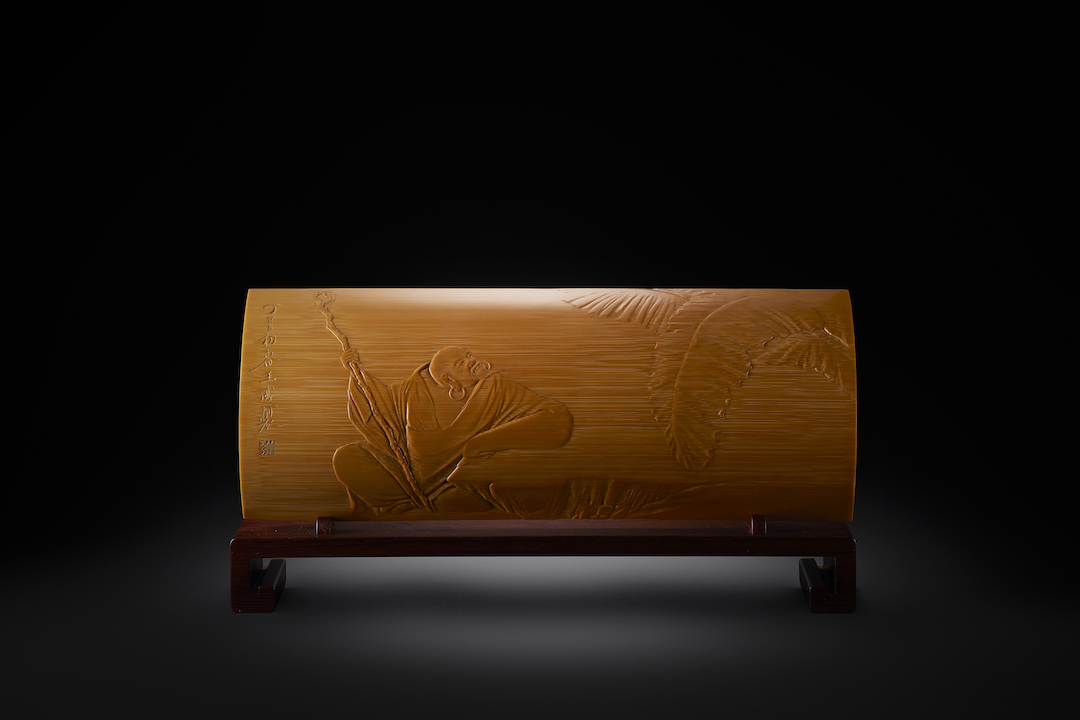
Wang Wei's illustration of appreciating bananas
The patterns of Jiading bamboo carvings contain the charm of traditional Chinese painting and the lines of traditional Chinese painting. For example, the bamboo carvings in Jiading represent distant mountains and near waters, including the wrinkles of the characters' clothes, which all borrow the lines and various techniques of Chinese painting. Before Jiading bamboo carving, the carving craft showed a kind of craftsmanship. Before the Ming Dynasty, all carvings were copied out with a triangular knife, so there was no sense of agility. Jiading bamboo carvings were written with a knife, and every stroke and knife had the charm of calligraphy and painting lines in it. This is also a major contribution of Jiading bamboo carving to the entire field of arts and crafts, and it is also a fundamental difference between the works of literati and the works of craftsmen.
Without the participation of Jiading literati, Jiading bamboo carvings would not have such a glorious history.
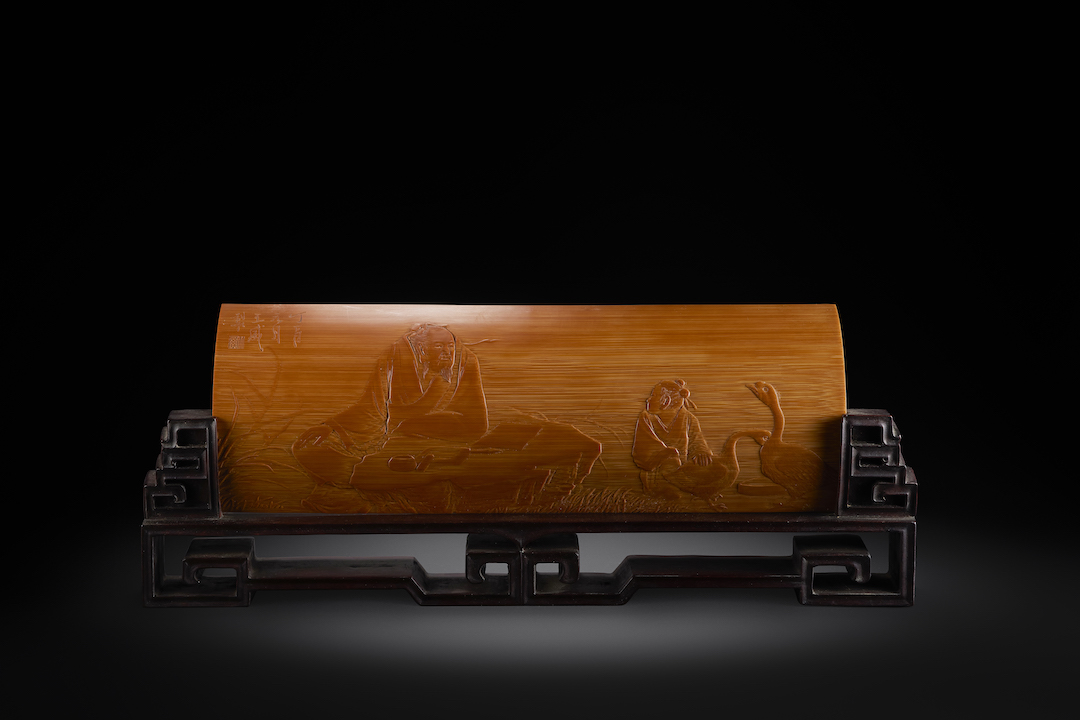
Xizhi loves the goose picture interpolation screen Wang Wei
The Paper: During your learning process, which bamboo figure had the greatest influence on you?
Wang Wei: I have inherited a complete set of Jiading bamboo carving techniques left by my predecessors, from openwork carving, thin surface carving, deep carving, shallow carving, round carving... But if I want to say who is more influenced, it is mainly influenced by Zhu Sansong. Zhu Sansong was the main founder of bamboo carving in Jiading in the late Ming Dynasty. He came from a family of bamboo carvings. His grandfather Zhu Songling and father Zhu Ying were both famous bamboo carvings. Zhu Sansong's techniques are mainly openwork and profound. The few openwork penholders exhibited in the exhibition that imitate the ancients are basically influenced by Zhu Sansong. Another person who had a greater influence on me was Wu Zhifan, a calligrapher, painter and bamboo carver in the Qing Dynasty, and the number one bamboo carver in Jiading after Zhu Sansong. Most of my engraved Bodi Yangwen and bas-relief works draw on Wu Zhifan's bamboo carving techniques.

Ming Sansong Style Bamboo Carving Panasonic Gaoshi Tingquan Picture Pen Holder (not in this exhibit)
I mainly borrowed their techniques. But for artistic creation, we must be upright and innovative. If there is no innovation, we will blindly imitate other people's techniques without forming our own style, and it will be difficult to make breakthroughs in art.
The Paper: What is the main style of your bamboo carving skills? This museum exhibition brings together your works of bamboo carving for forty years. Can you choose some works to introduce, and what creative process can you share?
Wang Wei: Among the works I exhibited are openwork carvings, thin-cut yangwen, deep carvings, shallow carvings, and round carvings. My personal style is mainly reflected in the portrayal of the characters' demeanor.

tea brewing qin decoration Wang Wei
For example, the ornament I engraved "Cooking Tea and Playing the Qin" is a round sculpture. The theme is Boya playing the drum and the piano. A boy beside him is cooking tea under the pine. Playing the piano posture, eyes closed, as if intoxicated in the music. Because I have studied Western painting and sculpture, I am more particular about the depiction of the faces of the characters. Carving according to the texture of the sculpture makes the characters more three-dimensional and more vivid.
Among all Jiading bamboo carving techniques, round carving is the most challenging skill of the creator. Without the foundation of painting, it is impossible to start if the shape is not accurate.
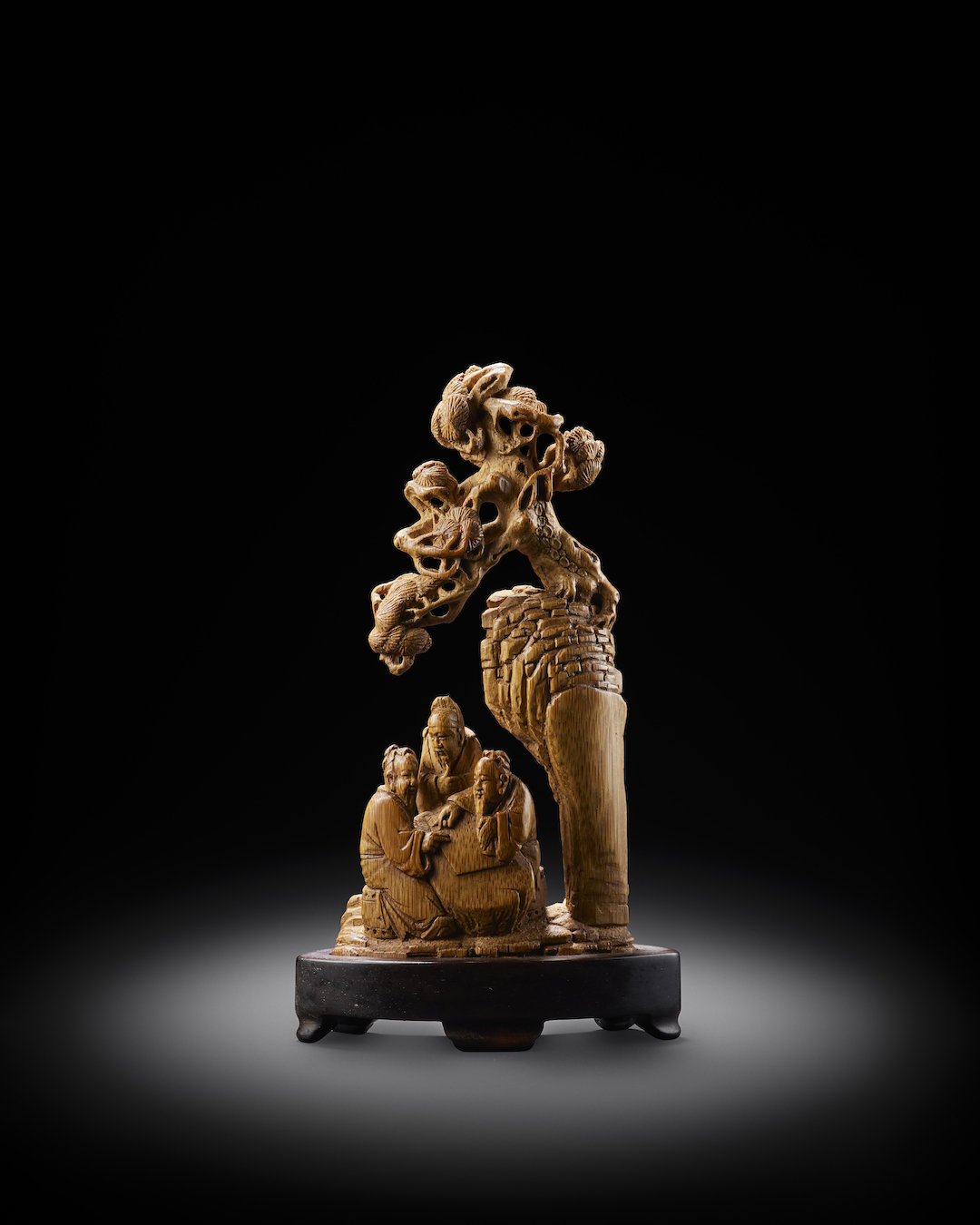
Panasonic playing chess ornaments Wang Wei

Bo Ya Playing the Piano Figure Interpolation Wang Wei
Another interstitial screen of "Bo Ya Playing the Piano" depicts the theme of Bo Ya playing the piano, but the expression method is completely different. It adopts the engraving method of Bo Diyang, which is more freehand. It doesn't use many knives, but every stroke is just right. Bo Ya is in the posture of playing the piano with both hands, leaning forward and stretching, with his eyes closed, he is also immersed in the performance of the guqin. The characters are also artistically exaggerated, especially the hands playing the piano, which are extraordinarily slender and slender, like a lady holding orchid fingers. The engraving of the Guqin is also from the real to the virtual, and extends to the distance. The background is embellished with three or two green bamboos.

Wang Wei's picture of holding the piano
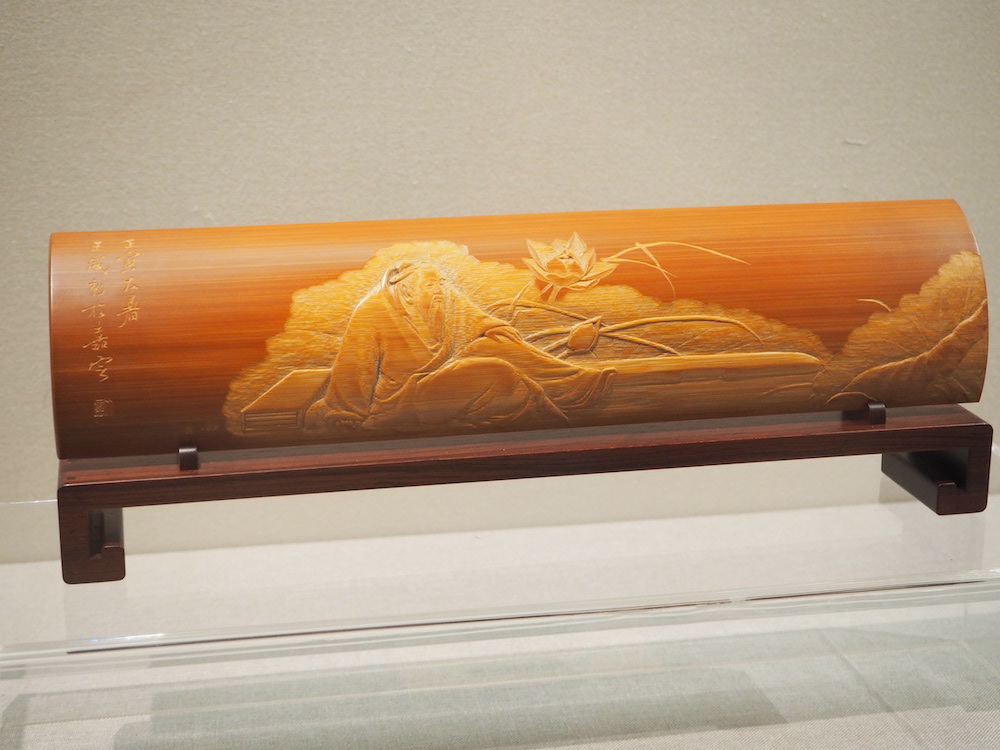
Lotus Appreciation Picture Interstitial Wang Wei
This "Appreciation of Lotus" is a work created during the epidemic last year when I was locked at home for several months. The bamboo material was a gift from my friend, and he has been playing with it for more than 10 years, so the bamboo material is very rosy and shiny. In order not to damage the patina on the surface of the green bamboo, I conceived such a pattern. First, I engraved a bearded man in a toga with long sleeves, leaning against a guqin. A large lotus leaf is shown, and the middle ground is lotus and thatch, which makes the whole picture rich and full of layers. This Gao Shi does not refer to any ancient person in particular, but viewers can understand it as an allusion of "Zhou Dunyi loves lotus".
For this work, I mainly use the engraving method of Bodi Yangwen, which is also a technique I have used more often in the past ten years. It can depict the characters in detail without destroying the mechanism of bamboo. This has also formed my unique style.

Bamboo Leaf Latitude Pattern Pen Holder Wang Wei
I have been engraving this "Bamboo Leaf Latitude Picture Pen Holder" for nearly 30 years. It is the pen container I started to carve when I first learned bamboo carving, because there was a mildew spot on the pen container, so it was discarded halfway through the carving. One day in 2001, when I was engraving other works, I suddenly looked up and saw that this mildew spot looked like a bug? Moreover, the bamboo tube has not cracked after being placed for so many years, so the idea of continuing to carve it was born. I sculpted a little, added two legs on both sides of the mildew spot, then added two whiskers, filled it with some ink color, and looked at it from a distance, it was a lifelike insect hiding behind the bamboo. The yin and yang carvings of the insects in the Yin carvings are compared with the Yin and Yang of the weaving mothers in the Yang carvings, echoing back and forth, which makes the work more ingenious.
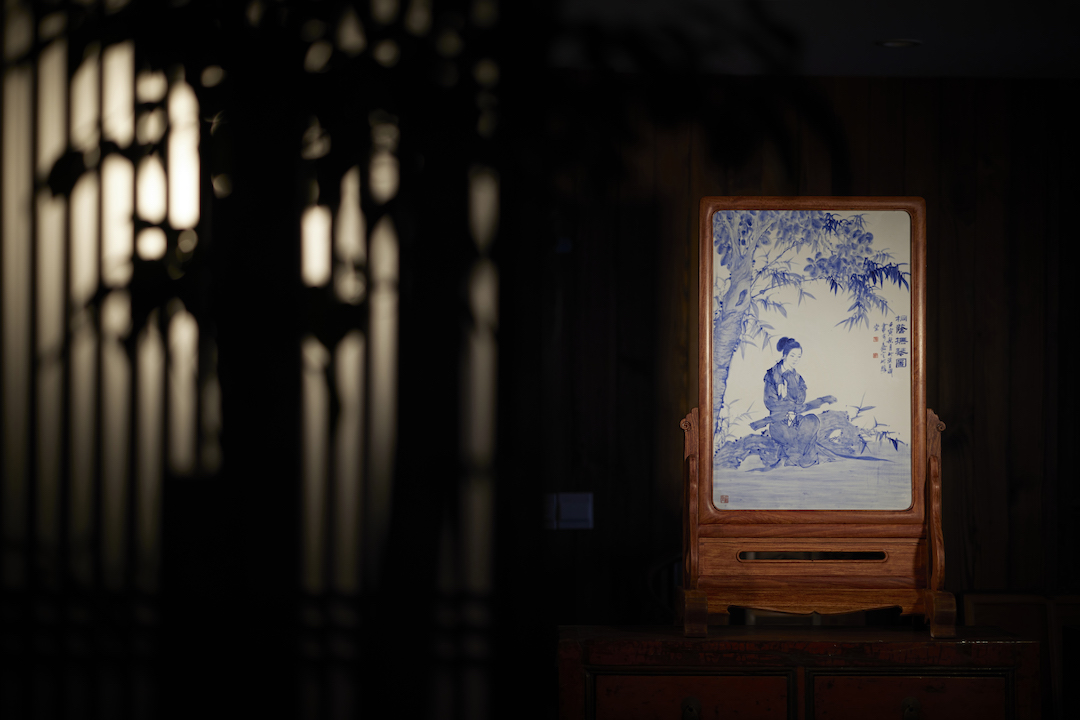
Exhibition site: Tongyin playing the piano on the screen
The Paper: Will you continue to carve bamboo in the future? What plans do you have for the craft development and inheritance of Jiading bamboo carving?
Wang Wei: I am mainly working on the inheritance of Jiading bamboo carvings. I am the inheritor of national intangible cultural heritage projects, and inheriting intangible cultural heritage is one of my responsibilities. Social duties I am also a part-time professor of the Academy of Arts and Crafts, leading apprentices every year. In the Jiading Museum, I also have a famous teacher studio, which is specially listed by the district government for leading figures in various fields, so it is also my responsibility to lead apprentices.
